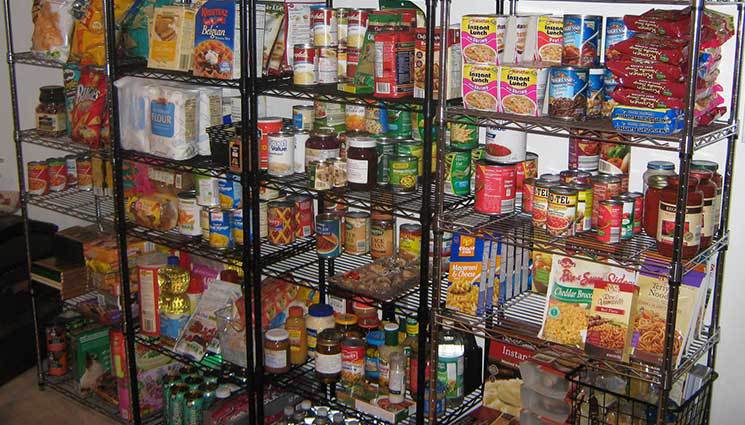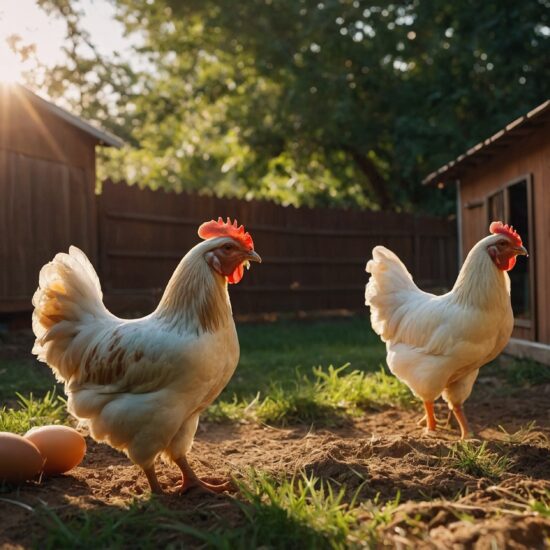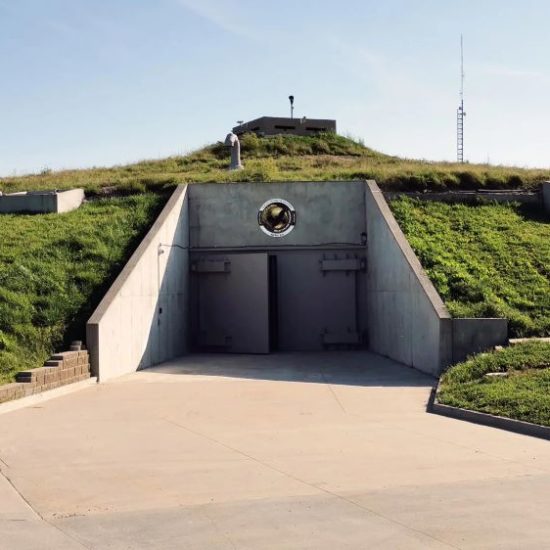
I believe there are several factors that make Food Storage stand out for people but above them all, I think the main reason is that everyone is so much more in tune with hunger. You don’t have to go more than a few hours some days before your stomach starts grumbling and I think the prospect of going hungry hits people in the gut (no pun intended) more tangibly than almost any other aspect of prepping because we know what it feels like. We feel it every day!
Think about it for a minute. We all eat pretty much every day, but how often are you fighting for your life, trapped in a bunker shooting hordes of zombies with your tricked out AR15? How often do you have to stitch yourself up after cutting your hand on a piece of rusty metal you were using to add more protection the family mini-van? Food Storage is important because you have to eat to live, but it should be the easiest preparedness item you can check off your list.
In this post, I hope to cover a lot of ground with the different aspects of Food Security as I see them and how to make a plan for your family and actually start building your food storage so that minor or even major disruptions in the food supply won’t impact you nearly as much.
The 3 Pillars of Food Security
In thinking about food storage or what we should do to have a well-balanced approach to storing food I think we are looking at three main categories. The first would be the food you eat every day. Next would be longer term food storage and lastly we would need to have a plan for growing our own food should all hell break loose and the other two options are depleted.
Buy more of what you already eat everyday
Unless you are the rare person who eats out all of the time and have nothing but some baking soda and a bottle of smart water in your fridge, chances are you go to the grocery store at least once a week. Your family probably has favorite meals or you have patterns of food that are regularly consumed because you like them. One of the easiest ways to build up your food storage for most people is to simply buy a little bit more of what you are already eating.

Long-Term Storable foods are a smart investment when you are ready.
This sounds easy enough right? Even I tried this on my wife at first and said, just buy more of the stuff we eat. The problem is that she has a grocery budget. Anything extra, costs extra and her budget wasn’t allowing her to build up any supplies. We could have cut in some areas and bought a little extra which we have done before but then you get off-balance. You end up with a freezer full of meat and nothing to go with it. I know, what’s wrong with that?
Stocking up extra is going to take some extra funds, but this amount can grow or shrink as your resources allow. Start by purchasing a few extra of all of the canned food items you buy. Then work your way out to the staples and baking goods and sundries like toilet paper and shampoo. You can make do without shampoo and I would even say toilet paper, but you can’t make do without food. Don’t run out and buy 55 extra value packs of Charmin ultra if you don’t have enough food to last a week.
If you have a windfall you can hit the local Sam’s or Costco and purchase some bulk items, but it is vital to make sure that you are using these items quickly enough that they don’t spoil. Giant tubs of peaches aren’t as great when they are 3 years past their expiration date. As a goal, I would try for 6 months of the foods you normally eat stocked away. This is well within the normal expiration dates for most of the food you buy except refrigerated items. By purchasing the foods you eat regularly and by maintaining a good rotation policy you should easily be able to keep things fresh in the pantry.
Buy and store foods meant for Long Term Storage
Once you have 6 months of the food you normally eat in the pantry, you should augment your supplies with long-term storage foods. These are foods with a shelf live measured in decades not years and they are the perfect set it and forget it option for long term planning. There are several different methods of buying processed foods or you can do the work yourself and save some money in the long run.
There must be dozens of suppliers of freeze-dried or dehydrated foods on the market and one even advertises on our site. The products, packaging and processes used to create these options vary somewhat but the end result is generally the same. This is food that you can purchase that requires no refrigeration although a cool storage environment is ideal. You purchase kits usually that have a set number of meals all individually stored or in #10 cans. I think that all of the vendors are moving away from #10 cans though and going to the stack able plastic tubs. This not only stores all of your food which come nicely packaged in Mylar bags, but the buckets can be reused when the food is all gone.
There are many ways to determine the value for each vendor but before buying a thousand dollars of freeze dried food, I would do your research. Once you have settled on a few vendors you want to test some of their products out. Most companies will either sell you a sample pack for a really low price or they will ship you a small sample for free. For those who have never had freeze dried food, it is an experience and I would caution you that while some of these meals are really good, this isn’t gourmet food you are buying. You are buying food that will last 30 years in your basement so that you can eat when you are starving. You aren’t going to get Ruth Chris’ flavor out of your freeze dried ground beef but it will keep you alive.
Build capacity to grow your own renewable food source
The last category is usually what people leave till it’s too late. It could be that you live in an apartment or have no room to plant a garden. It may be that gardening is hard work and you are unable to get out there and bust up a plot of ground or you may have tried and ended up with a patch of weeds that would make a Billy goat choke. Regardless of the reason, having the ability to grow your own food is going to be the most important part of your food security plan. This is hard because it will actually involve work and more importantly your time.
As far as I know you can’t go buy a garden in a can. I know there are a lot of places that sell survival seed banks and this might be something to consider if you have a garden already, but you should not expect to walk out your back door after the grid has gone down and have a Jack in the Beanstalk miracle overnight. Gardening requires a lot of energy at the start with clearing the land and preparing the soil. Once you have the ground ready, seeds take time to germinate and then it may be months before you actually have anything edible coming up in your garden.
Disease, pests, poor soil and even weather will all conspire to keep your garden from producing fruit so when you don’t have to depend on a garden for the food that will feed your family, that is the time you need to put in the work to get a garden established. Another aspect of gardening is that you can learn to can your own food. If we do go through a horrible grid-down scenario there will likely not be any power. Canning your vegetable harvest is going to be the simplest way to preserve food. I think its better to practice and purchase your equipment now as opposed to having something horrible happen and you have no way to save your food for your family.
So what should my plan be?
Here is my recommendation and I am happy for someone to tell me otherwise, but I think if you are looking to build up your food storage it should go something like this.
- Start planning a garden now. Next year’s growing season will be here sooner than you think. Now is the time to get your area set up and start getting the soil ready to grow your vegetables.
- Build up your stores of food you eat every day until you have a good 6 months’ worth of food on-hand. The goal should be that you don’t need to run to the store if the power is going to be out due to a winter storm. You shouldn’t be fighting the crowds if you only have a few hours of notice before something bad happens.
- Once you have 6 months’ worth of food, you should look into long-term storable food. This is food that will last you for years that you won’t need to worry about rotating and will give you a great option for supplementing your regular meals if needed.
- Use and rotate your food stores. This will accomplish two things. First, it will give you exposure to the menu options you have and secondly it will allow you to keep your inventory fresh.
Other tips and Resources
To find out how much food you want to stock up, you could look to the Church of Latter Day Saints. They are nearly famous for their stance on storing food and mandate (don’t quote me on this) that every family have a years’ worth of food stored up. There is a food storage calculator online that you can look at to see how much of various types of foods the LDS recommends you have on-hand for a certain family size. It’s amazing when it is all in on list like that.
Are there other food options? Of course, there are so many different ways to provide food for yourself from sprouting to livestock. This is just one path you can take. The point is to start moving in the direction of building up your stores. Worst case scenario you will have food to eat…
We also have some other posts that cover this subject from certain angles that you can check out.
- Store Food your family will actually want to eat
- How Much Food Is Enough? Understanding How Long your Food Stores will Last
- How to Make a Simple Root Cellar
- Storing your food in buckets – Great tips and instructions for storing your own food in Mylar bags.
- What do you do when the food is all gone?
- A killer lurking in your pantry – Talks about canning and precautions you should consider
- Prepping 101 – Food Preps: 30 Days Worth Of Food
- Vegetable Garden Planning for Beginners
- How to Install Raised Garden Beds
Thanks for stopping by. I hope this gave you some ideas for how you can make your own family’s food storage plan stronger.




















